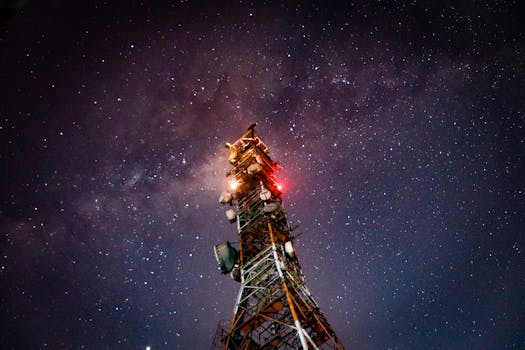
Starlink: Revolutionizing Global Internet Connectivity with Satellite Technology
Starlink is a groundbreaking satellite constellation developed by SpaceX, founded by Elon Musk, with the ambitious goal of providing high-speed, low-latency internet connectivity to every corner of the globe. This innovative technology has the potential to bridge the digital divide, transform the way we communicate, and pave the way for a more connected and equitable world.
The concept of Starlink was first announced in 2015, and since then, SpaceX has been working tirelessly to launch a network of low-Earth orbit satellites that can provide fast and reliable internet access to anyone, anywhere in the world. The satellite constellation is designed to consist of thousands of small satellites, each weighing around 400 pounds, that will be launched into orbit using SpaceX’s reusable Falcon 9 rockets.
The key benefits of Starlink lie in its ability to provide high-speed internet connectivity to remote and underserved communities, where traditional fiber-optic cables and cell towers are often nonexistent or unreliable. With Starlink, users can expect to enjoy internet speeds of up to 1 Gbps, with latency as low as 20 ms, making it suitable for a wide range of applications, from online gaming and video streaming to remote work and online education.
One of the most significant advantages of Starlink is its potential to bridge the digital divide, which refers to the gap between those who have access to modern information and communication technologies and those who do not. According to the International Telecommunication Union, around 3.8 billion people, or roughly half of the world’s population, lack access to the internet, with the majority living in developing countries. Starlink has the potential to change this, by providing a cost-effective and reliable means of accessing the internet, even in the most remote and inaccessible areas.
In addition to its potential to bridge the digital divide, Starlink also has significant implications for the environment and disaster response. For example, the satellite constellation can provide critical connectivity during natural disasters, such as hurricanes, wildfires, and earthquakes, when traditional communication infrastructure is often destroyed or disrupted. Starlink can also enable the creation of smart grids, which can help to reduce energy consumption and greenhouse gas emissions, by providing real-time monitoring and control of energy distribution systems.
Despite the many benefits of Starlink, there are also challenges and concerns that need to be addressed. One of the main concerns is the potential for space debris, as the launch of thousands of satellites into orbit can increase the risk of collisions and add to the already significant amount of debris in Earth’s orbit. Another concern is the potential for interference with other satellite systems and astronomical observations, as the sheer number of satellites in the Starlink constellation can cause radio frequency interference and optical pollution.
In conclusion, Starlink is a revolutionary technology that has the potential to transform the way we communicate and access information. With its ability to provide high-speed, low-latency internet connectivity to anyone, anywhere in the world, Starlink can help to bridge the digital divide, enable the creation of smart grids, and provide critical connectivity during natural disasters. While there are challenges and concerns that need to be addressed, the benefits of Starlink far outweigh the risks, and it is an exciting and innovative technology that will continue to shape the future of global communication and connectivity.





